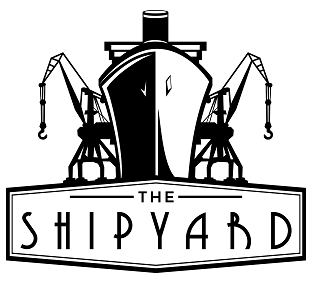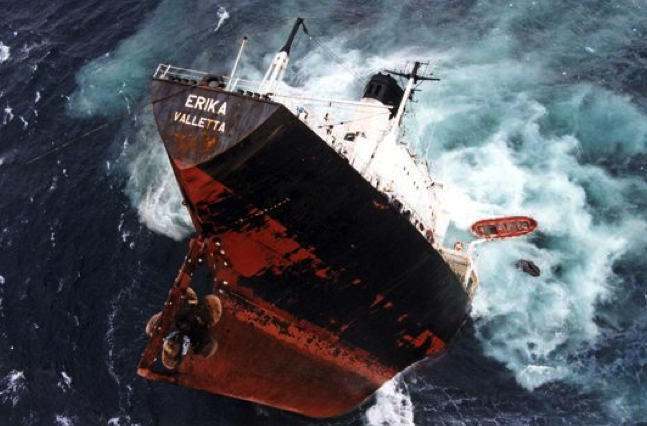A sunk ship is a nightmare for everyone involved – crew, passengers, and owners alike – but a tanker lost at sea is also an environmental catastrophe. Every time the ocean claims another crude carrier, an entire ecosystem suffers, while billions of dollars are spent on remediation activities that often turn out futile. These were the most disastrous sinkings in history, each one a painful scar in collective memory.
1. Amoco Cadiz (1978)
The Cadiz was a VLCC (Very Large Crude Carrier) operated by Amoco Transport, now part of BP. Built by the Spanish shipyard Astilleros Españoles in Cadiz in 1974, the tanker was one of many giant carriers from the golden age of oil. It was a different world back then, no ship deemed large enough for the booming post-WWII economies of Western Europe and the United States.
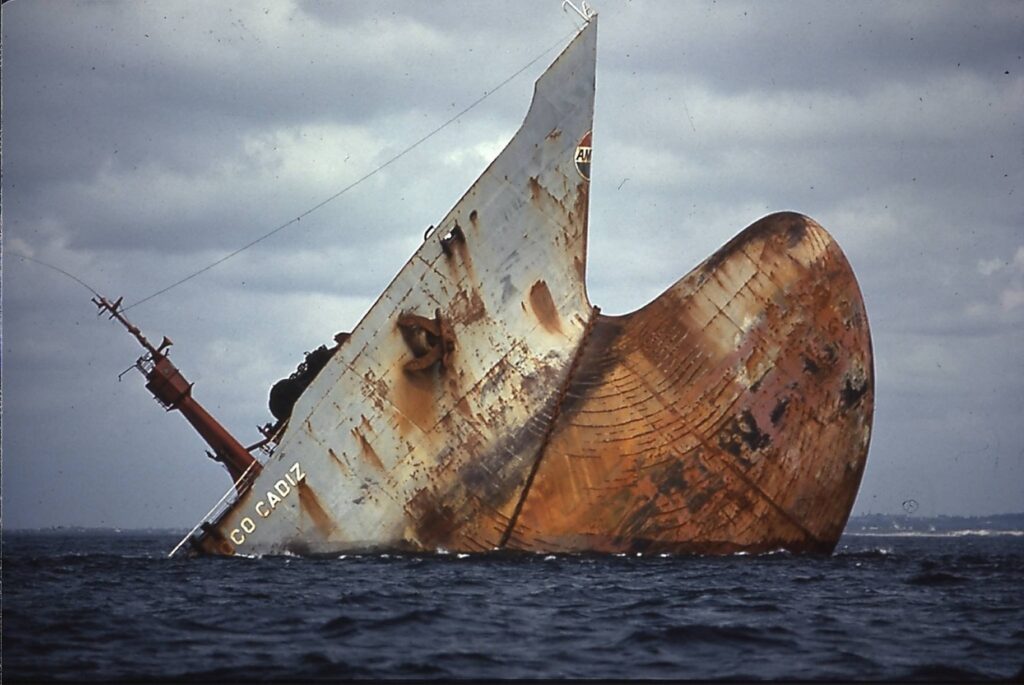
The Cadiz was not even the largest of its era, and thank goodness for that, because on 16 March 1978 her rudder jammed amidst a gale in the English Channel, and she drifted toward the coast of Brittany. Despite the captain’s best efforts and some frightful tugging on behalf of the towboat Pacific, the Cadiz ran aground, the jagged rocks tearing into her steel insides. Split in two (later in three) from the impact, she remained half-submerged, spilling all of her 220,000 tons (1.6 million barrels) of crude oil into the sea. The wreck is still a popular site for recreational divers.
2. Atlantic Empress & Aegean Captain (1979)
Only a year after the Cadiz, a Greek supertanker sailed into a thick fog off the coast of Trinidad and Tobago. The Atlantic Empress was loaded with Saudi Arabian oil and bound for Beaumont, Texas. When the crew discerned the outline of another Greek tanker in the haze, the two vessels were too close, and no frantic maneuvering could pull them off collision course. Minutes later, the Empress rammed the Aegean Captain, fires blazing out on both ships. In the following days, one explosion led to another, each one leading to more oil gushing out into the ocean. The incident took 27 lives, most of them on the Atlantic Empress, and spilled 287,000 tons of crude – the worst ever oil spill from a ship.
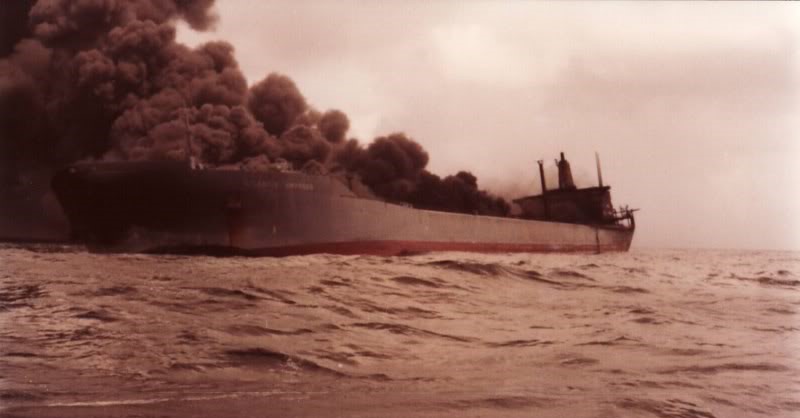
3. Castillo de Bellver (1983)
On 6 August 1983, another VLCC of the Astilleros Españoles dockyards circled the Cape of Good Hope on her way to Spain from the Persian Gulf. As she passed Table Bay near Cape Town, an explosion rocked the Castillo de Bellver, the resulting fire spreading fast to all parts of the ship. Most of the crew evacuated on time, before the vessel split in two, the stern plunging into the ocean first. A salvage team towed the bow away from shore and sank it with the help of explosive charges. Three crew members were never found, and 250,000 metric tons of crude oil remained floating on the surface of the ocean until dispersed by favorable currents.
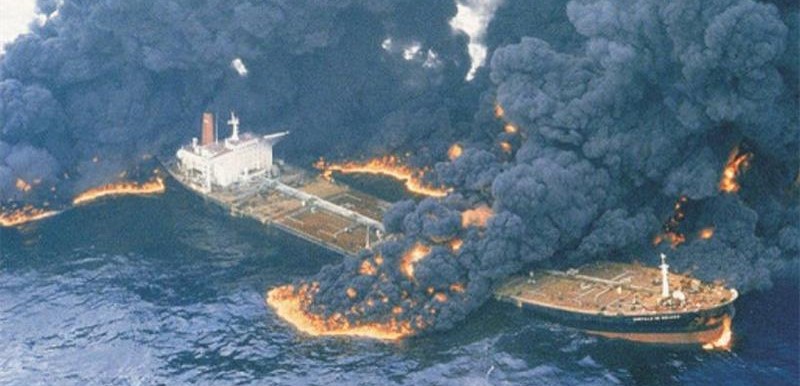
4. Sanchi (2018)
The worst tanker disaster in recent decades took place off the eastern cost of China, on one of the busiest shipping routes and just 160 miles from the world’s second most populated area. On 6 January 2018, the Iranian Suezmax tanker was approaching its destination at Daesan Port in South Korea, loaded with 136,000 metric tons of natural gas condensate. At 8 o’clock in the evening, she collided with the Hong-Kong-registered Panamax freighter CF Crystal. Sanchi’s double hull did not withstand such forceful impact, and the carrier was soon engulfed in flames. With the death of everyone on board, the burning carcass of the tanker drifted for 8 days, until it sank near Japan at only 150 m depth.
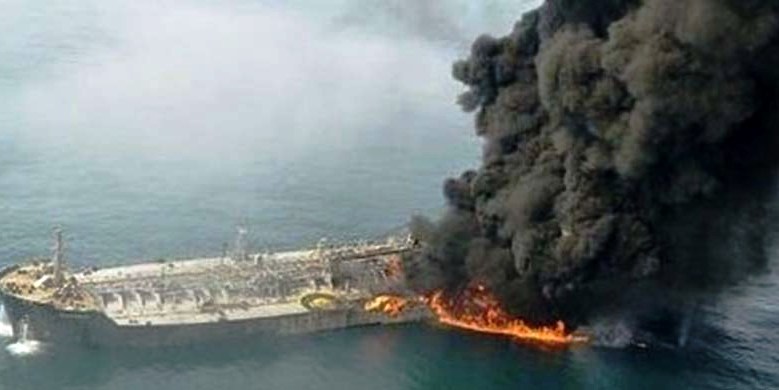
The incident presented the international community with a unique and terrifying challenge – the world lacked experience and knowledge to adequately tackle a condensate spill. Natural gas condensate is not only extremely volatile, making it more explosive than oil, but its high content of water-soluble substances means it can disperse deeper into the water, instead of floating on the surface. In addition, condensate is highly toxic to marine animals, and scientists still argue about the full impact of such enormous quantities discharged into the sea.
5. Sea Empress (1996)
The Spanish-built Norwegian tanker was delivering oil to a Texaco refinery in Wales, when a current in the Milford Haven Waterway carried her off-course and into an underwater rock. The resulting gash in the hull let 72,000 tons of crude spill into the protected ecosystem of Pembrokeshire Coast National Park. In the rush of the moment, the port authority in Milford Haven dispatched towboats to the wreck, but tugging only enlarged the tear, further accelerating the spill. The port authority was later fined by a Welsh court for inadequate navigation on behalf of the pilot, who lacked experience with Suezmax vessels at low tide. The oil spill caused irreparable damage to the coastline.
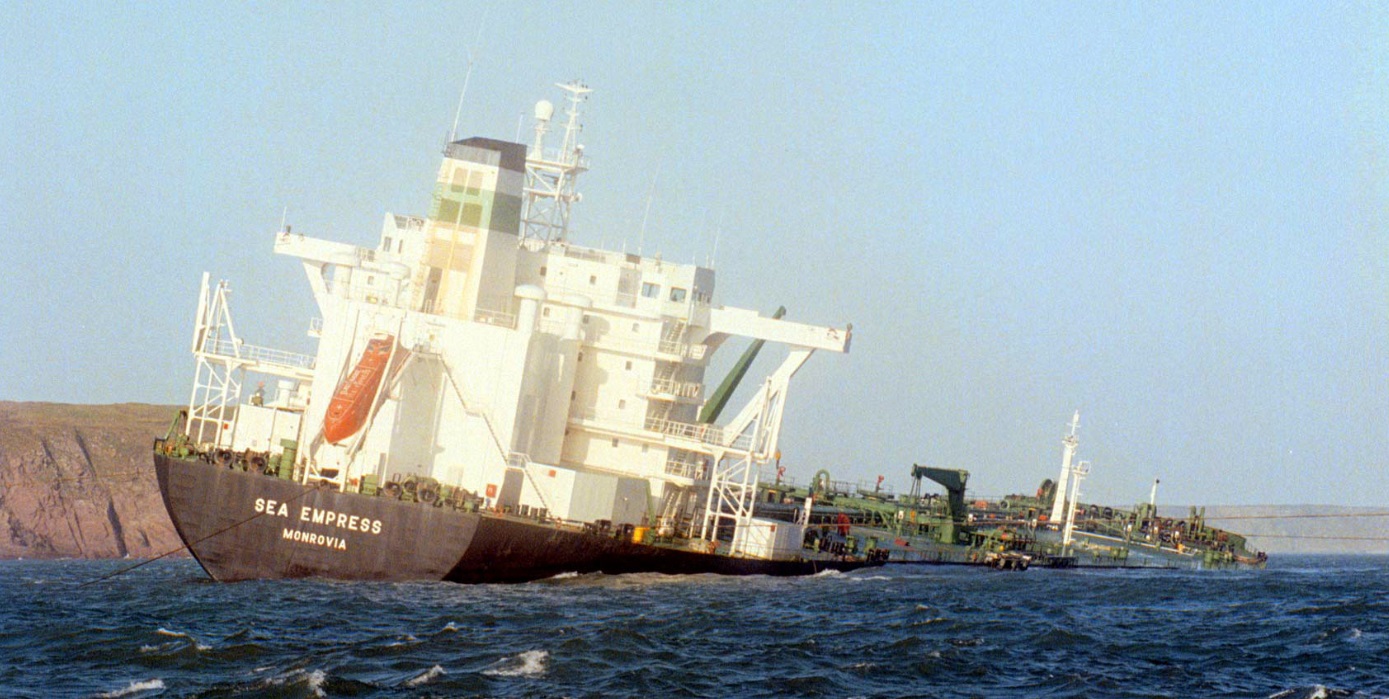
6. Torrey Canyon (1967)
In 1967, environmental preservation was still in its infancy, the world being more preoccupied with the task of fueling the global economy. When a supertanker ran aground near Cornwall, forming a 700 km2 slick, all this was about to change. Unaccustomed to major spills, the British and French governments struggled to contain the disaster, with British efforts being far more dramatic and less successful.
Don’t forget to visit the The Shipyard Shop!



In late March that year, the Suezmax Torrey Canyon approached the coast of Britain on her way to Milford Haven from Kuwait. Pressed for time, Captain Pastrengo Rugiati took what he believed to be a shortcut, striking a reef not far from the Scilly Isles. As she began to crack under her own weight, the Torrey Canyon regurgitated all 100,000 tons of oil towards the British and French coastlines.
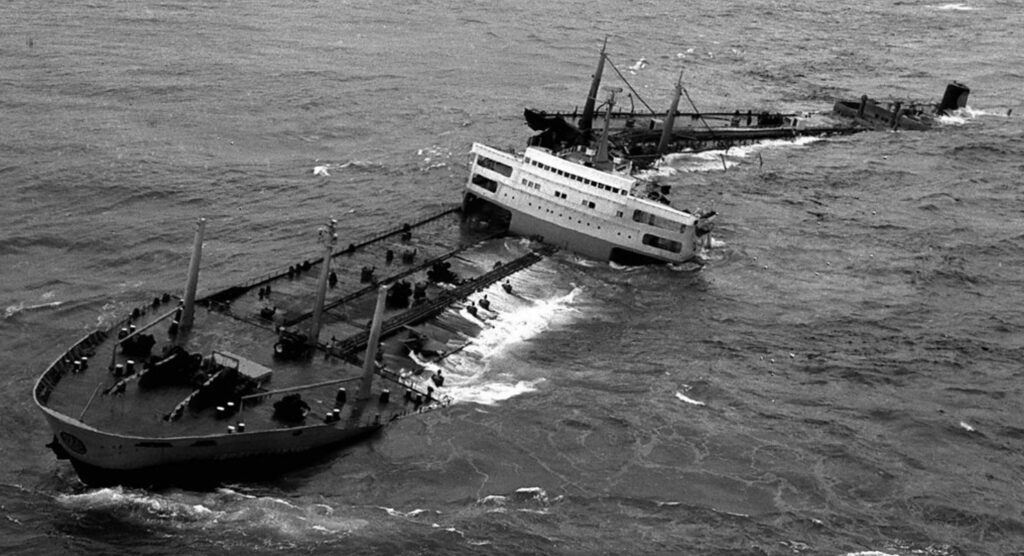
While the French rushed to the beaches to scoop away the oil with handheld tools, Britain took a more technological approach, beginning with a peacetime bombing campaign to sink the stranded vessel and burn off the oil. Despite the monumental quantities of explosives (including 1,500 tons of napalm), many charges failed to detonate, while ocean waves extinguished the flames, leading to a drawn-own and agonizing operation. When the Torrey Canyon sank at last, the problem with the oil slick remained. The government distributed enormous quantities of dispersal agents to the local population, which not only failed as a measure but poisoned the local ecosystem for decades ahead.
7. Prestige (2002)
If the above disasters were tragic, this one was outrageous to criminal proportions. The Prestige was carrying 77,000 tons of fuel oil, when a storm off the Galician coast caused a large crack in the hull. She was an old girl, long past retirement age, as most experts agreed in the aftermath of her demise. The hull had just been repaired, but investigations revealed the structural failure was precisely in the area of the repair. Whatever may have caused the damage, what followed was even more scandalous.
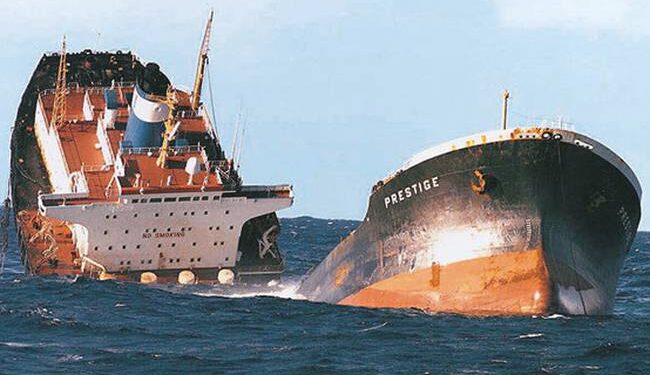
The Spanish government ordered the tanker to be towed north to avoid polluting their coast, a move which did not stand too well with the French, who sent their navy to block all access to French ports. The Portuguese navy’s reaction was the same, and wounded old Prestige drifted for the next six days, spilling 60,000 tons of fuel and contaminating over 3,000 km of coastline in Spain, France, and Portugal.
8. Haven (1991)
When built in 1973, Amoco Milford Haven was a sister ship of the Cadiz, and just like her sibling, left a somber mark in shipping history. In 1988, the Milford Haven took a missile during the bloody Iran-Iraq War, an event that should have perhaps led to her retirement, but Amoco decided to refit her and sell her off to a less discerning buyer. The reconditioned VLCC ended up in the fleet of Cypriot company Troodos Shipping, plying the route between Iran and the Mediterranean.
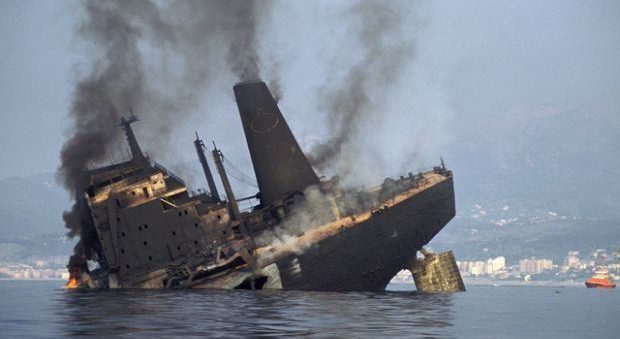
Shortly after midnight on 11 April 1991, MT Haven was unloading at a floating platform not far from the port of Genoa. As the crew disconnected to transfer oil between holds, a frightful explosion tore through the vessel, the column of fire flaring 100 m into the air. All six crew members on board died in the blazing nightmare, and 40,000 tons of crude spurted into the Mediterranean. Italian authorities reacted fast, surrounding the area with inflatable barriers, but as the ship was too far out at sea, the decisive measures produced only partial results – the surrounding coastline remained polluted for years.
9. Erika (1999)
To say that she was a humble vessel would be an understatement. In addition to her 24 years on the job, the single-hulled Erika was far from a masterpiece of shipbuilding. Despite a list of shortcomings, however, she had one quality that always appealed to large corporations – she was cheap, and this made her very popular, all the way to the winter of 1999. On December 11, she sailed into a fierce storm in the notorious Bay of Biscay. A crack in the hull led to a heavy list, and after a long fight to stabilize her, she broke in two near the southern coast of Brittany. The French Navy rescued the entire crew, but all attempts to mitigate the 31,000-ton spill were hampered by unstable weather conditions. The incident remains one of Europe’s most severe environmental disasters.
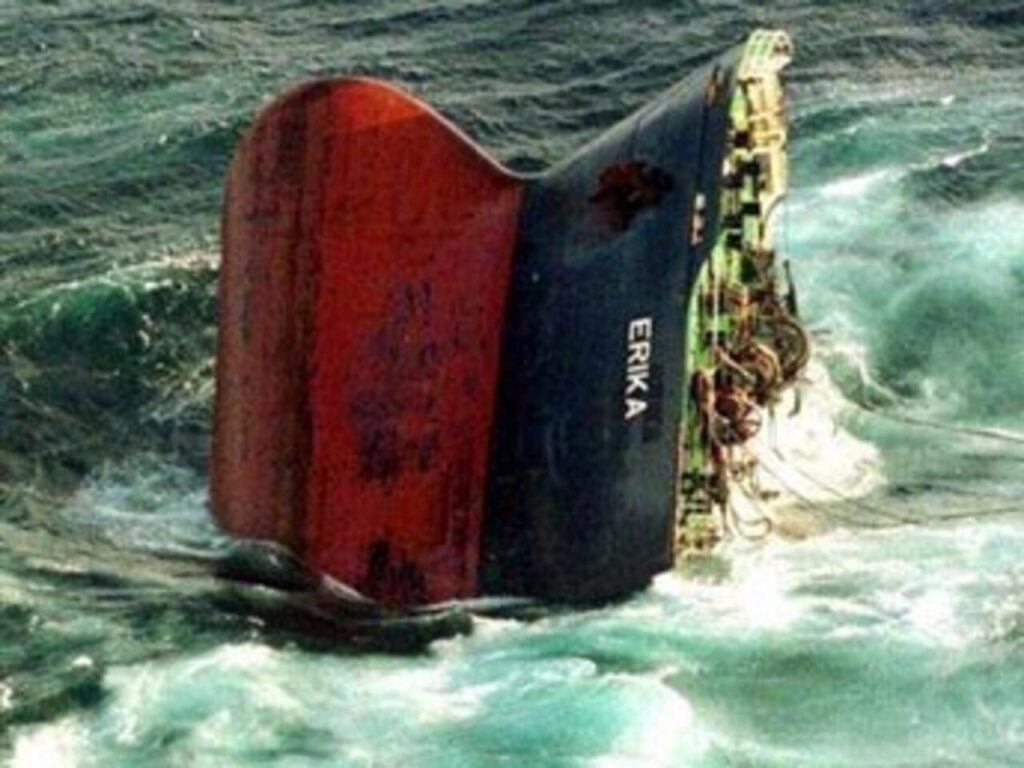
The Shipyard
